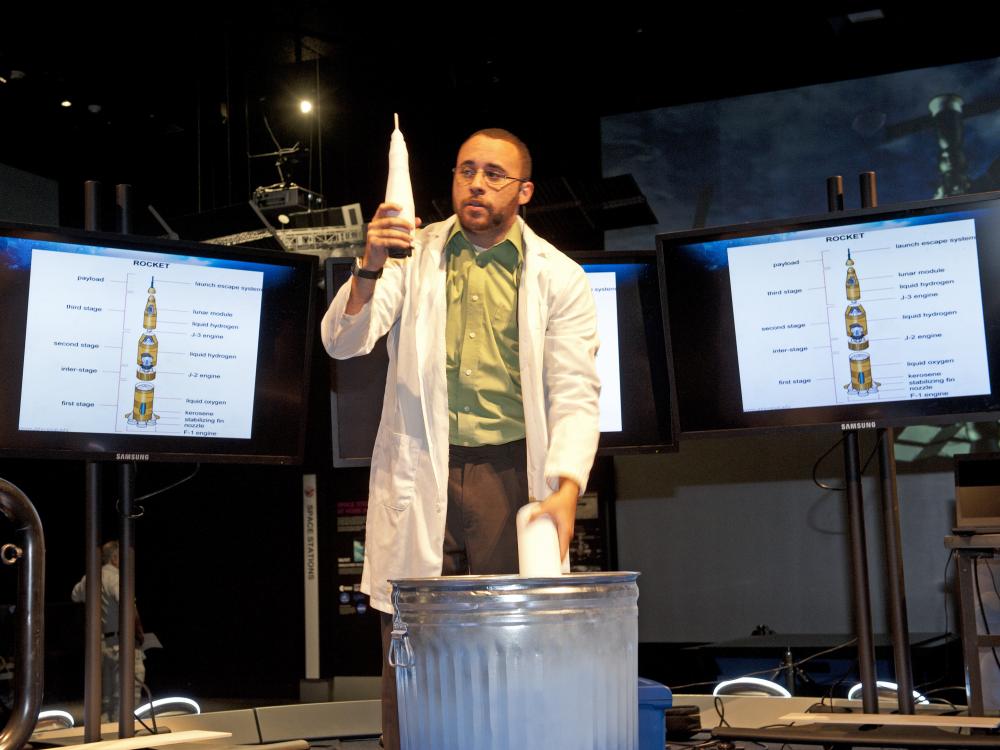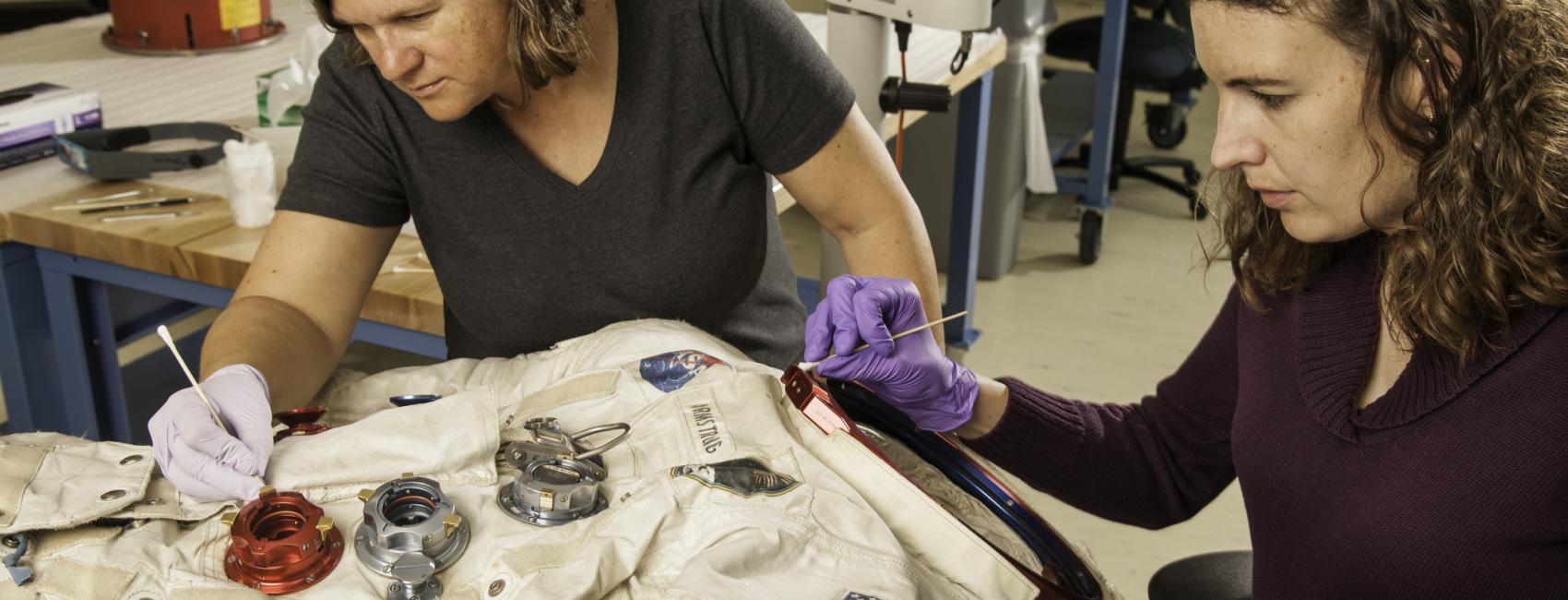
Aug 15, 2011
By Tim Grove
“How the Shuttle Got Its Wings” is a brand new interactive theater program the Museum is presenting this summer in the Moving Beyond Earth exhibition. We are fortunate that the Smithsonian family includes Discovery Theater, a theater group that focuses on young audiences. We approached them more than a year ago about creating a program highlighting the space shuttle program, especially for the Moving Beyond Earth stage. The show finally debuted in mid-July and our timing couldn’t have been better. The successful mission of shuttle Atlantis several weeks ago closes the book on the space shuttle story. The topic has been all over the news and many of our visitors want to talk about it. The program is presented four times daily to enthusiastic audiences who want to reminisce about the shuttle era.
The 20-minute program starts with an excerpt from President Nixon’s 1972 speech announcing the development of “an entirely new type of space transportation system… it will revolutionize transportation into near space by routinizing it.” Routine, reusable, safe, and affordable… four words we repeat often in the program. Those were the goals for the shuttle. The story unfolds through the eyes of an aerospace engineer. We chose that character because the story is about the shuttle itself — its various components, its design, and its role. The program is based heavily on the Moving Beyond Earth exhibition script (currently in development), which focuses on the space shuttle era. The second phase of the exhibition, opening in 2012, will feature fascinating models of what the shuttle could have looked like, a life-sized shuttle mid-deck that visitors can explore, and many objects flown in space and just recently de-accessioned by NASA.
We worked with the Discovery Theater staff to ensure that the program is highly participatory. Younger ages enjoy helping to put pieces of a shuttle together and representing the different roles the shuttle has played over the years… delivery truck, space bus, service station, science laboratory, and international project. Older visitors enjoy remembering major accomplishments of each orbiter. The program ends with the question: Did the shuttle program meet the criteria set for it? Routine, reusable, safe, and affordable. The audience gets to vote. Our goal is to send audiences away thinking about this one-of-a-kind vehicle and its role in the history of American technology. What do you think? Did the shuttle program meet the criteria? The Museum continues to experiment with different ways to engage our visitors and educate people about our collections and research. This experiment with theater has been well received. If you haven’t seen the program, it runs daily through August 21 and then a few weekend dates after that. Check the website for times.

We rely on the generous support of donors, sponsors, members, and other benefactors to share the history and impact of aviation and spaceflight, educate the public, and inspire future generations. With your help, we can continue to preserve and safeguard the world’s most comprehensive collection of artifacts representing the great achievements of flight and space exploration.
We rely on the generous support of donors, sponsors, members, and other benefactors to share the history and impact of aviation and spaceflight, educate the public, and inspire future generations. With your help, we can continue to preserve and safeguard the world’s most comprehensive collection of artifacts representing the great achievements of flight and space exploration.